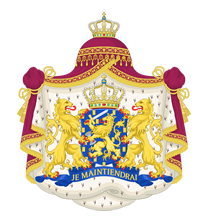Netherlands: Government
Key Figures
- Chief of State:
- King Willem-Alexander
- Head of Government:
- Prime Minister Dick Schoof
Overview
- Government Name:
- Kingdom of the Netherlands
- Constitution:
- Formed: 1983; The current edition after many revisions is seen as directly derived from the 1815 constitution. A bill of rights is included. Constitution does not permit judicial review of the acts of the States General, thus there is no constitutional court in the Netherlands.
- Government Type:
- Parliamentary Constitutional Monarchy

Index of Economic Freedom
Country Risk Rating
Government Branches
| Main Powers | Election Process | Election Cycle 1 | |
|---|---|---|---|
| Executive | Monarch has a role in the formation of the government and legislative process. He has to co-sign every law to make it valid and is also ex officio chair of the Council of State. |
Monarch is hereditary, and the prime minister is appointed by the monarch, and the deputy prime minister is appointed by the prime minister. |
Prime Minister: 4 years; Deputy Prime Minister: 4 years |
| Judicial | Hoge Raad is the highest court of the land and deals with civil, criminal, and tax-related cases. |
Justices are appointed by the monarch from a list provided by the Second Chamber. |
Mandatory retirement age of 70 |
| Legislative | First Chamber has the right to accept or reject legislative proposals, but not to amend them or to initiate legislation. The Second Chamber discusses proposed legislation and review of the actions of the cabinet take place here. May propose legislation and discuss it. If adopted by the majority, it is sent to the Senate. |
First Chamber members are indirectly elected through a flexible-list proportional representation system. Second Chamber members are elected through a flexible-list proportional representation system. |
First Chamber: 4 years; Second Chamber: 4 years |
Regional Trade Blocs
International Organization Participation [2]
Environmental Agreements [3]
Tax Information [2]
- Tax Authority:
- Ministry of Finance
- Tax Name:
- VAT
Sources:
- ElectionGuide http://www.electionguide.org/
- EY, http://www.ey.com
- CIA World Factbook, https://www.cia.gov/the-world-factbook/
- U.S. Bilateral Relations Fact Sheets http://www.state.gov/r/pa/ei/bgn/


